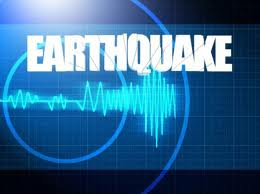
Kolkata/Chennai, April 11: The Indian National Centre for Ocean Information Services (INCOIS) has issued Tsunami warnings for Indira Point, Great and Little Nicobar, Komatra and Katchal and Car Nicobar in the Andaman and Nicobar Islands. An alert has been issued for Little Andaman, North Sentinel Island, Flat Island and Port Blair and several places in Andhra Pradesh and Tamil Nadu.
Following the massive earth quake in Indonesia, tremors felt across West Bengal including the capital Kolkata in the afternoon around 2.14pm. Till now no major damage has been reported from any part of the state and the city but the tremor scared people who chose to rush out on the streets soon after feeling the quake.
In Kolkata, people working and staying in highrise buildings were the first to feel the tremor who ran down on the roads stricken by fear. The disaster management group of Kolkata Police was deployed in different parts of the city as a preventive measure. They mainly evacuated all the multi-storied buildings. People working in sector-V, the IT town of Kolkata were among the people who felt the tremor better than other citizens. Most of the IT majors asked the employees to vacate the building.
The huge rush on the roads caused traffic chaos and in several places cracks have been spotted in different buildings. APJ House, a known office building located on Park Street, developed major cracks. Members of disaster management group and fire brigade officials are taking stock of the damage to prevent further accident. "I was working on the 9th floor of the building. Suddenly for a few seconds I felt everything in front of me is shaking. Even my chair was also shaking. We took a couple of minutes to realise it as an earth quake and then rushed down," said Samik Banarjee, an IT employee at Salt Lake sector five.
Two high rises in central and south Kolkata reportedly leaned after the quake and experts rushed to the spot for inspection. Metro train services were also suspended for security. "After inspection of the tracks and system we will resume the service," said a Metro official.
Tremors have been felt in the hills of Bengal where little damage have been reported. However, no casualties have been reported so far. Officers of disaster management group are in touch with the officials of all the districts for update.
Two powerful after shocks following the first quake have created a Tsunami fear among the people in the coastal Bengal. District administrations in East Midnapore and South 24 Paraganas have asked people to move out from coastline for safety. Tsunami alert has been announced at Sagardwip and Kakdwip areas of Bengal coast.
Strong tremors in Chennai
Strong tremors were felt in several places in Tamil Nadu Wednesday following the massive earthquake in Indonesia, with people coming out of their homes and some schools moving students into open grounds.
According to reports, tremors were felt in Chennai, Madurai, Coimbatore, Nagapattinam and other areas. Coastal regions in the state have been put on high alert.
“I was lying on the floor reading a paper when I felt the shake. I immediately came out of the apartment and saw several others doing the same,” said W. Shobha, who lives in Chennai's Adyar area.
“We brought the children to the grounds once we felt the tremors,” a teacher at a leading school in South Chennai told IANS. The earthquake had its epicentre off the west coast of northern Sumatra and occurred at 2.08 p.m., the IMD said.
It led to a tsunami warning in 28 countries, including India, and brought back memories of the 2004 tsunami that saw more than 7,000 people being killed in Tamil Nadu's coastal areas.





Comments
Add new comment